10 of the Best Winter Hiking Pants for Your Next Cold-Weather Adventure
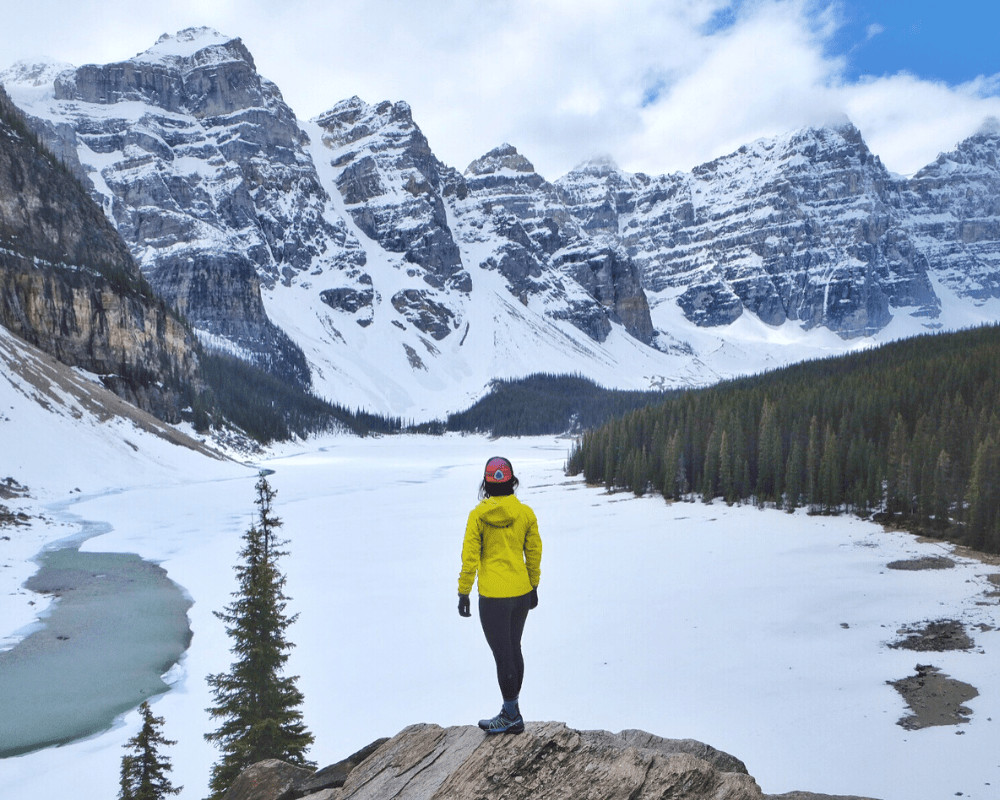
Hiking in the winter is challenging, especially without the right pants.
The wrong choice can leave you feelin’ as mummified as Ralphie’s little brother (Ian) in A Christmas Story plus sweating your bum off—quite literally. But the right choice will leave you comfortable, warm, AND dry all day long with plenty of mobility to go around.
While it may seem like buying one pair of warm, thick winter pants is the way to go, it’s not what we recommend or do ourselves for various reasons.
In this article, we talk about how we approach winter hiking pants, why we approach them that way, our top recommendations for different situations, and a step-by-step buyer’s guide to help you make the best choice.
Our Top Three Picks:
A Note About Hiking in Cold Weather (IMPORTANT)
One of the biggest mistakes we made when we first started hiking in cooler weather was wearing winter clothes. It sounds crazy, but you exert a LOT of energy when you’re hiking, which keeps your body warm.
Wearing thick, insulating clothing can actually cause you to overheat and make you severely uncomfortable the moment you start sweating.
It can also be dangerous since there’s no way for your sweat to escape.
Since then, we’ve learned to approach winter hiking pants as a system. It’s not one piece of clothing that keeps you warm (and dry), but several layers designed to do different things.
Plus, you can easily take layers off when you’re moving and add layers when you stop to take a break. This flexibility lets you regulate your body temperature way better than you can with one insulated pair of pants.
There are typically three different layers, including:
- Baselayer – synthetic or wool against-the-skin layer to wick moisture
- Midlayer – down or fleece layer that delivers breathable insulation to keep you warm
- Outer Shell – weather resistant (or weatherproof) layer to keep you dry
In most cases, I wear a baselayer under softshell pants. The softshell acts as both a midlayer and a weather-resistant shell. If I get too warm, I can take off my softshell pants and hike in my baselayer leggings. This setup gets bonus points because I can wear either my baselayer or softshell pants as a solo layer when it’s warm!
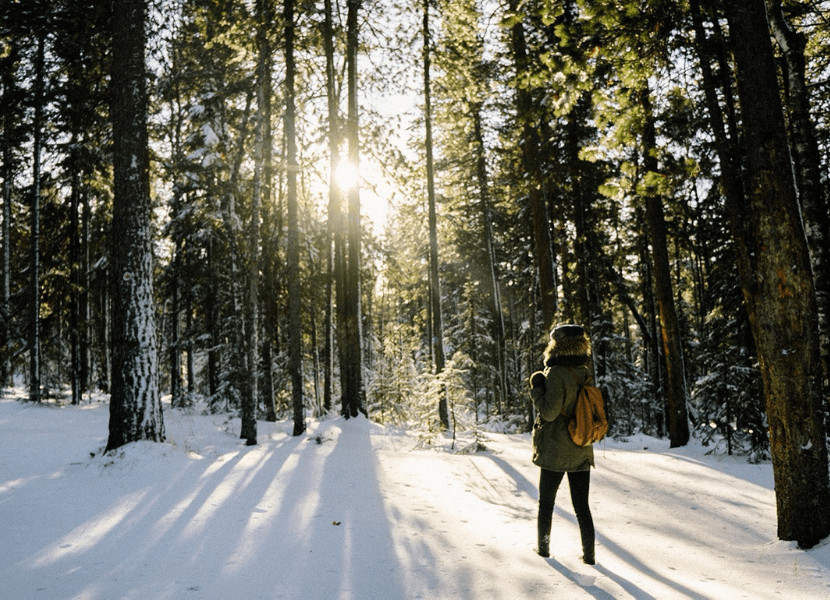
However, there are a few exceptions to this:
- If hiking in rain or snow, a very thin waterproof (not weather-resistant) shell is nice to have. Your baselayer and softshell keep you warm while the waterproof outer shell keeps you dry from rain and snow.
- Snowboarding or skiing – insulated winter pants are completely suitable for this since your legs won’t sweat as much as they do while hiking. However, we don’t do a lot of this, so we can’t make recommendations on what to get.
- Your personal preference – the best thing you can do is try different options to figure out what you prefer. I know that takes time, which is why this post exists (to help guide you in the right direction). But you’ll eventually figure out a winter hiking pants system that works for you and the weather/terrain in your area.
In this article, we cover the best baselayers, softshell pants (that comprise both your mid and shell layer), and weatherproof outer shells for hiking in the winter. Just keep in mind that the optimal winter hiking solution is a combination of layers that you can take off or put on as you need to.
There’s also a budget-friendly section below the reviews with our top cheap recommendations if you’re ballin’ on a tight budget or weren’t expecting to have to buy multiple pieces of clothing.
The 10 Best Winter Hiking Pants — Our Top Picks for 2021
Here’s a quick overview of our top ten choices for different layers. If you want more info about when to use what + the things we love and don’t love about each option, click the product name to jump right to it or scroll down to read them all + a complete buyer’s guide.
- Columbia Omni-Heat – Best synthetic midweight base layer
- Minus33 – Best merino wool midweight baselayer
- Meriwool Lightweight – Best lightweight baselayer
- Carhartt Force – Best heavyweight baselayer
- Fjallraven Abisko – Best baselayer for drastic temp changes
- Arc’Teryx Gamma AR – Best softshell winter hiking pants
- Eddie Bauer Guide Pro – Best budget-friendly softshell pants
- Black Diamond Stormline – Best waterproof rain pants
- Marmot PreCip – Best full-zip waterproof rain pants
- Carhartt Force Convertible – Best convertible pants for men
- Wespornow Women’s – Best convertible pants
#1 – Best Synthetic Baselayer
Columbia’s a big name in outdoor gear, and these Omni-Heat baselayer leggings are an overall excellent moisture-wicking option for most weather conditions. They’re super stretchy and breathable. Plus, the 100% polyester material is super comfortable against your skin and is easy to care for.
The Omni-Heat coating on the inside helps your lower half retain heat by reflecting it back to your legs to keep you nice and toasty without being overbearing. The technology also lets moisture and excess heat escape so you stay comfortable at different exertion levels.
That paired with Omni-Wicking technology means you’ll also stay dry all day, which is exactly what you need from a good baselayer.
They’re versatility, weight, and material make them an excellent choice for various winter weather conditions, from cold temps up to more moderate temperatures as well.
You can also wear them as a standalone layer or for lounging around the house (booonus!)
They come in a wide range of sizes from XS to XL for both men and women. The polyester material offers less insolation than a merino wool baselayer but it’s much easier to wash and care for.
Snag yours:
#2 – Best Merino Wool Baselayer
If you’re looking for something a bit warmer, Minus33 merino wool leggings are an excellent option. They offer more insolation than their synthetic counterpart and are naturally more odor-resistant. As such, you can wear them multiple times without having to wash them or on multi-day backpacking trips without them stinking too bad.
Heading out for your first multi-day backpacking trip? Super pumped for youuuuu. Check out our top backpacking tips for beginners!
They’re midweight, making them suitable for most cold-weather conditions for people who tend to feel colder in the winter.
On top of that, they’re environmentally friendly and made with renewable merino wool.
These leggings feature flatlock seems to reduce chafing, are very comfortable against your skin (unlike other types of wool), and are completely tagless for total comfort. You can even wear them as a solo layer or while lounging around the house on a cold day.
But the best part is that they’re more affordable than other merino wool options on the market and they come in an all-inclusive range of sizes from XS to 6XL.
They come in six colors for women and 10 colors for men, including several neutrals and a few bright options to fit your style.
Merino wool delivers natural moisture-wicking and quick-dry properties that outperform synthetic materials (like polyester). However, merino wool is less durable and won’t last as long. You may also want to hand wash and lay flat to dry for best results.
Snag yours:
#3 – Best Lightweight Baselayer for Cool Weather
If it doesn’t get very cold where you live, a lightweight baselayer is a better choice. It’s my personal preference for most hikes, here in the PNW since it never gets very cold (depending on the elevation).
I highly recommend these Merinowool Lightweight baselayer leggings. They’re very thin, quick-drying, moisture-wicking, and odor-resistant. Plus, the lightweight material makes pulling layers on over them a breeze.
As such, you get everything you expect from a good baselayer without retaining too much heat and causing you to sweat even more.
Like most other merino wool options, these too are eco-friendly and made with renewable materials. So, you can rest assured you’re doing your part in supporting a business that’s making a difference.
However, Meriwool recommends that you hand wash and lay flat to dry to ensure your new leggings last as long as possible. This may not be ideal for everyone, so keep that in mind.
Another thing to note is that these aren’t really suitable as a solo layer. They’re very thin and may become see-through. They also provide virtually no insolation, so you’ll want a midlayer or well-insulated softshell pants for colder days or hiking in higher elevations.
Snag yours:
#4 – Best Heavyweight Baselayer for Super Cold Temps < 20°
For super cold days or hiking at higher elevations, you may want to opt for a heavyweight baselayer rather than heavier softshell pants. If that’s the case, I highly recommend Carhartt Force Heavyweight baselayer leggings.
They’re not great for cool or mild temperatures, though since you’ll get overheated rather quickly. So, keep that in mind.
Rather than wool OR synthetic fibers, these pants utilize both to create a well-insulated pair of trekking tights that are machine washable and will stand up to the test of time.
They also feature flatlock seams designed to lay comfortably against your skin. Plus, the waistband (a notably bulky part of most baselayer bottoms) is well-designed to reduce bulk and make them more comfortable around your hips + waist.
With that said, 100% merino wool options offer better odor-resistance than the anti-odor treatment applied to these pants. That’s not a dealbreaker for us, but it’s still something to consider.
There are five color options for men and two for women, with a wide range of sizes from XS to 4XL to fit hikers of all shapes and sizes.
Snag yours:
#5 – Best for Drastic Temperature Changes Throughout the Day
It’s not uncommon for temps to start cold in the morning and warm up drastically throughout the day. If that’s the case where you’re hiking, you need a baselayer that’s suitable for various conditions. Enter… the Fjallraven Abisko Trekking Tights.
They’re more expensive than all of the other options on our list, but they’re well worth the price if you need leggings that keep you warm when it’s cool AND cool when it’s warm.
You can also wear them as a solo layer when it starts warming up outside.
In fact, they’re actually built for this. They’re the ONLY baselayer option with pockets, making them that much better for use as a solo layer.
But you can still easily slide on a pair of softshell pants over them when the temps drop again, without them feeling too bulky.
While most baselayers aren’t very rugged, these have extra reinforcement in the knees and rear to ensure you’re protected even if you wear them without softshell pants. These trekking tights look almost like an actual pair of pants, with numerous belt loops and a built-in fly on the men’s version.
You can choose from six women’s colors and three men’s colors, with sizes ranging from XXS to 3XL.
Snag yours:
#6 – Best Overall Softshell Winter Hiking Pants
If you’re looking for an all-around excellent pair of softshell winter hiking pants, Arc’Teryx Gamma AR is our go-to. They’re suitable for most cold weather conditions, although they may be a bit too warm if it’s above 45-50ish (F) degrees.
The nylon, polyester, and elastane blend makes them incredibly comfortable and breathable with four-way stretch that doesn’t affect mobility on the trail.
There are numerous pockets on both the women’s and men’s version, a built-in belt to customize your fit, and an adjustable bottom cuff to keep snow out of your boots. As such, you get everything you need in softshell winter pants.
Plus, the material is naturally water-repellant with an added DWR coating to ensure your pants and legs stay dry in light precipitation. They’re also wind resistant, too!
With that said, the one thing these pants are missing is belt loops for hanging lightweight gear (or your keys) off your pants—and a cheaper price tag.
These come in two colors for women and three colors for men, with sizes ranging from 0 to XXL. When picking a size, these run true to size, but don’t forget to consider the thickness of your baselayer.
Snag yours:
#7 – Best Budget-Friendly Softshell Hiking Pants
Not looking to spend nearly $200? No problem! Eddie Bauer’s Guide Pro pants are Dalton’s go-to. He seriously wears his ALL THE TIME (they even look nice enough to wear out and about) and he’s never had any issues.
You can toss them in the washer and dry them with the rest of your clothes, which isn’t an option with some higher-end softshell pants.
Plus, these hiking pants actually have belt loops (unlike the more expensive option above).
They’re also an excellent choice for eco-conscious adventurers since they’re made in a sustainable textile production facility—we see you Mother Nature!
The spandex material adds extra stretch, mobility, and breathability vs. nylon on it’s own. And they’re naturally water-repellent too! They also feature an additional DWR coating to ensure the exterior and interior of your pants never get bogged down with water.
But the best part (aside from the price tag) is the abundance of color choices. There are 11 different options for both men and women, including my favorite—burnt orange (rust)!
They come in SO many sizes, from 0 for women to a 44 waist for men, with petite, regular, and tall lengths to fit hikers of all sizes.
However, keep in mind that the women’s version doesn’t have back pockets and that these aren’t the highest quality or most durable option you’ll find on the market. But that’s what we expect with a budget-friendly price tag.
Also, the logo glows in the dark… which is kinda weird but not a deal breaker.
Snag yours:
#8 – Best Lightweight Waterproof Shell for Hiking in the Rain or Snow
While softshell winter hiking pants are excellent for light rain or snow, you’ll need something weatherPROOF for heavy rain and snow conditions. Preferably a pair of pants that doesn’t resemble a black trash bag.
Most rain pants do, unfortunately. But we found exactly one pair that doesn’t—Black Diamond’s Stormline Stretch rain pants. *cue jumping for joy!
They’re 100% rain and windproof with ⅓ length calf zippers at the bottom that make it easy to slide them on without taking off your shoes or getting the inside of your pants muddy. They also pack down into the right rear pocket for easy storage in your pack when you don’t need them.
There’s even a small carabiner loop so you can hang them off your pack to keep everything inside your pack dry.
Nylon’s naturally water-resistant and these pants also have an additional DWR coating.
They also have a 10K waterproof rating, meaning it’s waterproof enough to handle moderate rain or snow for short periods of time.
However, you shouldn’t use these in place of softshell pants or hike in them all the time because they offer next to no breathability. You will feel extremely warm in these pants (they legit will feel like a trash bag), since no moisture can get out.
As such, we only recommend using these when it’s raining or snowing and taking them off when it’s not.
Snag yours:
#9 – Best Full-Zip Waterproof Shell for Hiking in the Rain or Snow
The above pants are great, but full-zip pants are better in super muddy conditions since they make it easier to put your rain pants on without sliding them over your shoes.
For this, we highly recommend Marmot’s PreCip Lightweight rain pants.
Another benefit of full-zip rain pants is that you can unzip them from the ankle when you’re wearing them for ventilation. This can help excess heat escape for a few minutes without having to completely take off your rain pants.
However, we still don’t recommend normally hiking in rain pants since they’re not breathable—this is particularly true when you’re exerting a lot of energy.
These pants come with tapered seams designed to prevent leaks, an elastic cinch-cord at the ankles to keep water out of your boots, and an elastic waistband for ultimate comfort (even if you ate too many Thanksgiving taters the day before).
With that said, the velcro closures along the side zippers really suck. Velcro connections tend to weaken over time, meaning you may have a harder time securing them in the future.
They’re also rather noisy thanks to the NanoPro waterproof coating. But other sounds of nature (like rain) are much louder, so it’s not necessarily a dealbreaker.
Snag yours:
#10 – Wespornow Convertible Pants – Best Convertible Winter Hiking Pants
Convertible pants were big when i was in elementary school—there was almost nothing cooler than zipping those bad boys off and turning them into shorts for afternoon recess.
Despite the cheesiness, Wespornow convertible pants are a great choice if you’re on a tight budget and looking for a pair of winter hiking pants you can also use in the summer. As long as you layer correctly, you should have no problems hiking in the winter in convertible pants.
We particularly like these because you can also roll the ankles up to turn them into capris. They’re perfect for those days when it’s not quite shorts weather but also not pants weather.
Alternatively, you can cinch the pull-cord at the ankles for yet another option.
These pants feature an elastic waistband for comfort, very stretchy material for enhanced mobility, and plenty of options for ventilation when you need it.
However, they’re not as warm as other options nor are they weather resistant. So, they aren’t suitable for hiking in the rain or snow (even if it’s relatively light). The horizontal zippers are also a tad bit bulky, but that’s more of a cosmetic thing than anything.
Snag yours:
Honorable Mentions: Best Budget-Friendly Winter Hiking Pants
Hiking gear can get expensive… quick. And we totally get it! So, here are our top budget-friendly winter hiking pants recommendations:
- Eddie Bauer Guide Pro Softshell – (Men’s | Women’s)
- Wespornow Convertible Pants – (Men’s | Women’s)
- Meetwee Thermal Baselayer – (Men’s | Women’s)
- TBMPOY Quick-Dry Softshell – (Men’s | Women’s)
Note: these aren’t as high quality as other options on our list and may not offer the same level of moisture-wicking, warmth, durability, or comfort.
As with most things, you get what you pay for—although there’s nothing wrong with opting for cheap if you’re just getting started or only plan to use them once.
All I’m saying is keep that in mind as you make your final decisions.
Comparison Table
Columbia Omni-Heat
| Minus33 Merino Wool
| Meriwool Lightweight
| Carhartt Force Heavyweight
| Fjallraven Abisko Trekking Tights
| Arc'Teryx Gamma AR
| Eddie Bauer Guide Pro
| Black Diamond Stormline Stretch
| Marmot PreCip Lightweight
| Wespornow Convertible
|
How to Choose the Best Winter Hiking Pants for You
There are literally thousands of winter hiking pants out there, so it’s no surprise the decision feels impossible. However, we’ve nailed the decision-making process down to a step-by-step science after buying dozens of pants on our own without the guidance we needed.
1. Understand the Different Types of Hiking Pants
The right options for you depend on the terrain and weather. So, I can’t tell you what’s perfect for your situation, but I can walk through each type of hiking pants and give recommendations for when to choose what.
Baselayer – designed to wick moisture away from your skin and dry quickly to keep you comfortable, even during high exertion activities (like hiking).
Insulated snow pants – not really suitable for hiking and better suited for snowboarding or skiing. With hiking, you exert a LOT of energy and you’ll probably get too toasty with insulated snow pants.
Softshell pants – the most versatile option that’s suitable for almost anything with the right layering system. Most offer some form of weather-resistance with adequate ventilation. They’re not waterproof but they offer more breathability, making them excellent for most dry and slightly wet conditions.
Rain pants (or hardshell pants) – these are waterproof but not as breathable as softshell options. We recommend only wearing these for heavy rain or snow situations and not as your main winter hiking pants. If you do get a pair, opt for calf zippers or a full-zip option to pull on or off without taking your shoes off.
At the very least, you should opt for a solid baselayer and softshell, since they’re versatile and can be worn as solo layers in warmer weather or paired in colder conditions. If you live in a wet part of the world (like we do in the PNW), rain pants are an excellent addition to keep you dry.
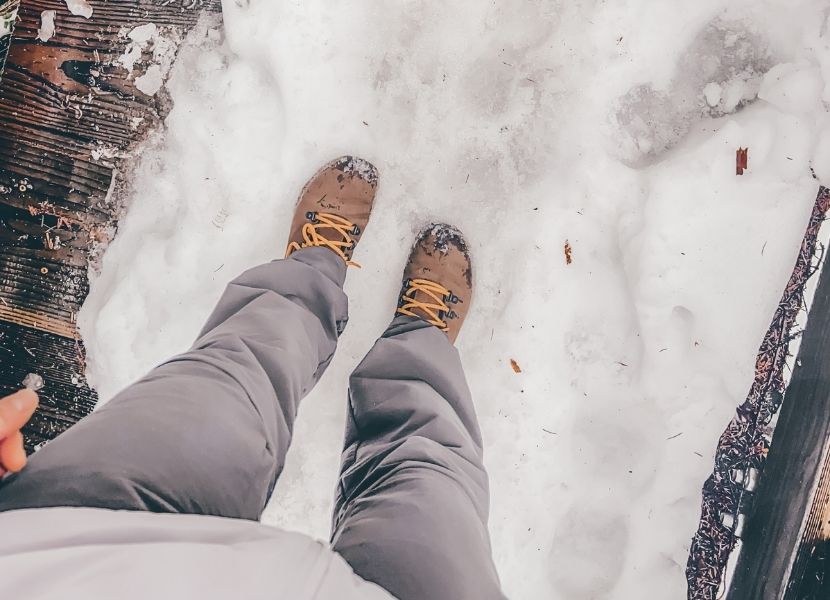
2. Choose Your Baselayer and Softshell Pants
As we talked about earlier, we (almost) always go with a baselayer and a softshell for hiking in the winter. So, the next thing you need to do is choose one of each.
Since there are different baselayer weights, it’s important to choose the right weight for the weather conditions you expect. If you’re looking for something that’s excellent in most conditions, go with midweight.
These are great as a solo layer or under softshell pants, so it’s a double win.
However, if it never gets super cold, a lightweight baselayer is more suitable. Just keep in mind you can’t wear these on their own since they tend to be see-through.
If it’s very cold or you tend to run cold in the winter, heavyweight or a fleece lined baselayer may be a better option for you.
When it comes to softshell pants, the biggest factors are your budget and the features you’d like to have. For example, some include belt loops while others come with an integrated belt and no loops. Some softshells are incredibly durable with a high price tag while others are more affordable but less likely to stand the test of time.
At the end of the day, it comes down to personal preference. We highly recommend ordering multiple pairs if you can and returning the ones you don’t like.
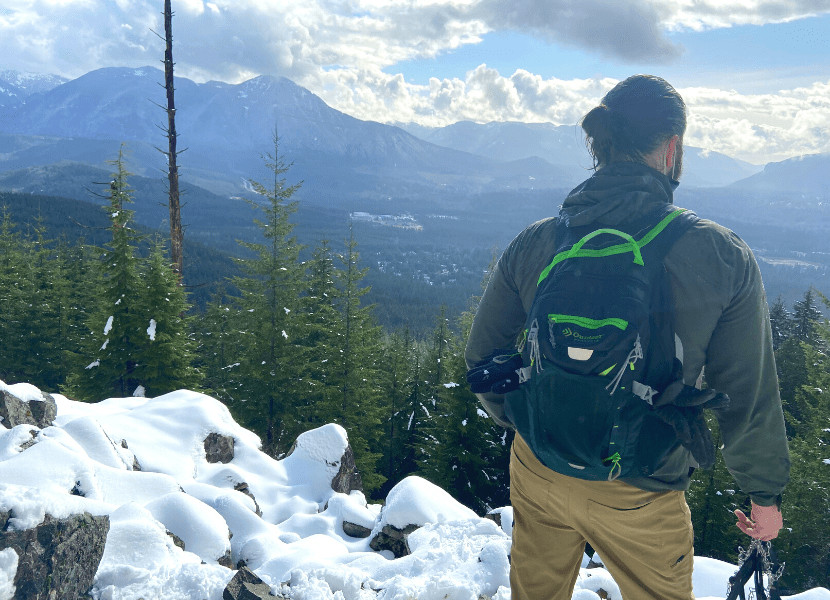
3. Opt for Rain Pants if You Frequently Experience Rainy or Snowy Conditions
If you live in the PNW or somewhere that gets a lot of rain or snow, rain pants (or hardshell pants) are a smart choice. They’ll keep you dry for a short period of time in intermediate rain/snow conditions.
While softshell pants are weather-resistant and built for breathability first, hardshell pants are waterPROOF and not breathable at all.
So, they’re not suitable as full-time hiking pants. Only when it’s considerably wet.
Most of them pack down pretty small for easy storage and they don’t take up a lot of room in your pack. There are dozens of styles to choose from, but we highly recommend opting for at least a calf zipper or a full-zip option so you can easily put them on without taking off your boots.
Note: you may not need rain pants. If you don’t hike in heavy rain or frequently experience super wet conditions, softshell pants are probably more than enough to keep you dry.
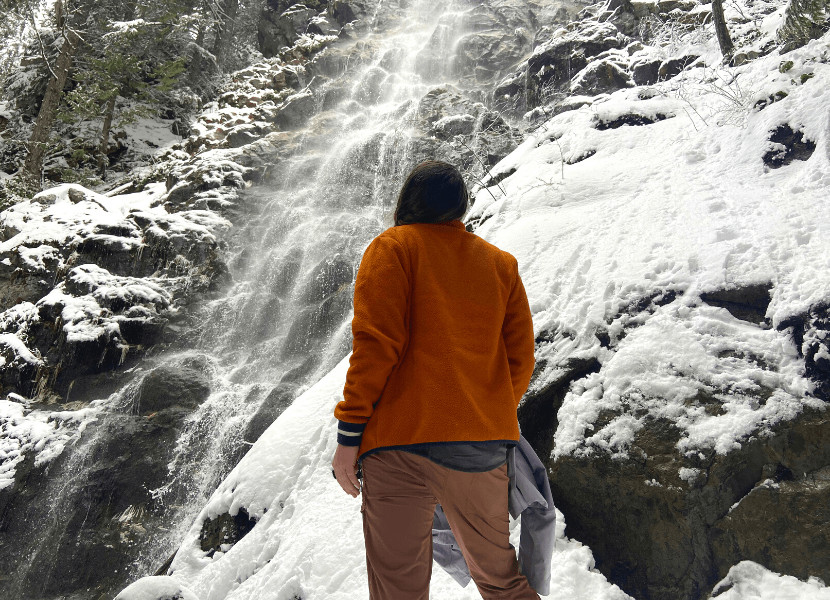
4. Hold Out for Pants that Fit Well
With baselayers, they should feel comfortable. They also shouldn’t feel constricting or too tight to the point where you can’t move or they cut off your circulation. However, they should also be snug since they’re designed to be worn directly next to your skin.
Sizing your softshell layer isn’t necessarily as easy. You need to think about how they fit both over a baselayer and on their own (if you want to use them in warmer weather).
And since they keep a bit of water out, they tend to be more restrictive. However, they should fit loosely with plenty of room to move around.
Nothing should feel too tight or uncomfortable whatsoever.
Keep in mind that different styles, brands, and cuts will fit differently. It can be tricky to find the best fit for your body, especially if you order online. We like to order a few different pairs to see what we like best and return the ones that don’t work.
However, don’t settle for a pair that fit “just okay.” It’s worth it to hold out for pants that fit well. Otherwise, you won’t be excited to wear them!
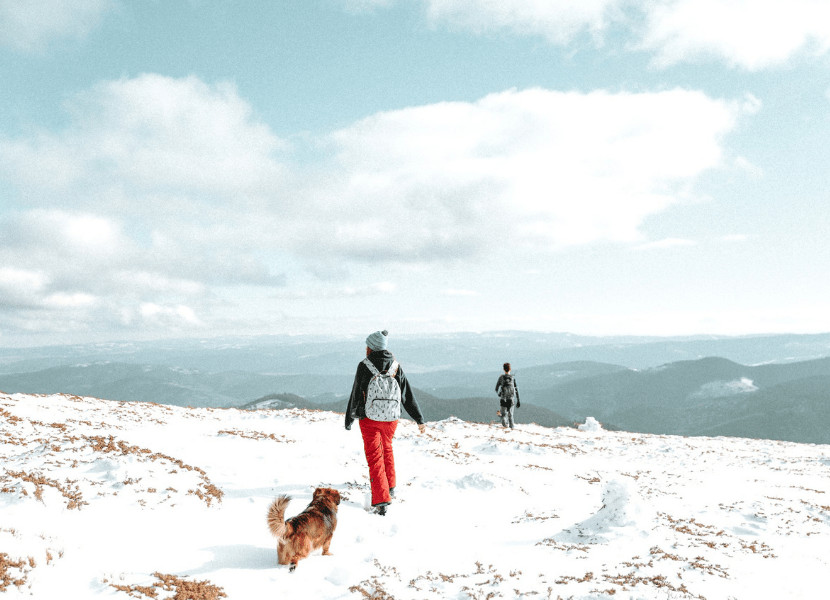
5. Optional Features
There are several other, less significant features (that may be important to you!) to consider when deciding on a pair of pants, including:
- Material – always avoid cotton pants. Suitable materials for winter hiking pants include merino wool, polyester, polyamide, and nylon. These may be blended with other materials, like spandex or elastane, to improve mobility. Each material delivers different properties and ultimately comes down to your preferences.
- Pockets – not all pockets are created equal, especially with women’s pants. For whatever reason, many brands and styles give men more (and bigger) pockets. My personal preference is large pockets. Specifically, I use the thigh pocket for my phone more than anything. But you may not even use or need pockets if you have a suitable hiking backpack that fits well.
- Convertible – if you’re on a tight budget or looking for something that’s wearable in warmer temperatures, convertible hiking pants are a good option. You can usually roll them up into capris or zip off the legs to turn them into shorts. Most aren’t weather-resistant or all that warm, though so keep that in mind.
- Fit and color – hiking pants come in a variety of fits, including slim, skinny, bootcut, and more. They also come in various colors. I prefer bright options that stand out, but you may prefer something more neutral.
Frequently Asked Questions
The best winter hiking pants are a combination of a moisture-wicking baselayer and an external soft or hard shell for insolation plus protection from the elements. Our top recommendations are Columbia’s Omni-Heat baselayer + Arc’Teryx Gamma AR softshell pants for most cold-weather conditions.
Layering is key to staying warm and comfortable when hiking in the winter. You should have a baselayer that’s snug and wicks moisture away from your skin, a midlayer that keeps you warm, and a shell that protects you from wind + rain. For pants, we (almost) always opt for a baselayer plus softshell pants that act as both insulation and weather protection.
The easy answer? It depends! In cold weather, we highly recommend a moisture-wicking baselayer plus softshell pants that keep the wet + cold out. In warmer weather, you can opt for just a baselayer or lightweight softshell pants, depending on the terrain. We also recommend a pair of lightweight, waterproof rain pants if you frequently hike in the rain or snow.
You should opt for a synthetic or merino wool baselayer. They both deliver moisture-wicking, quick-dry properties designed to help moisture (from sweat) escape, keeping you dry and warm. Synthetic materials are easier to care for and more durable, but tend to dry a bit slower. Wool often requires handwashing and isn’t as durable, but dries faster and offers better odor-resistant properties. Ultimately, it comes down to your personal preference.
For pants, you need (at least) two things: a synthetic or merino wool baselayer and softshell pants that keep you warm and protect you from rain + wind. You may also want lightweight + waterproof hardshell pants to wear over your other layers if you frequently hike in the snow or rain.
Was this article fantastic? The worst? So-so? If you can answer “uhhhh yes” to any of those questions, take a moment and share it with your friends!
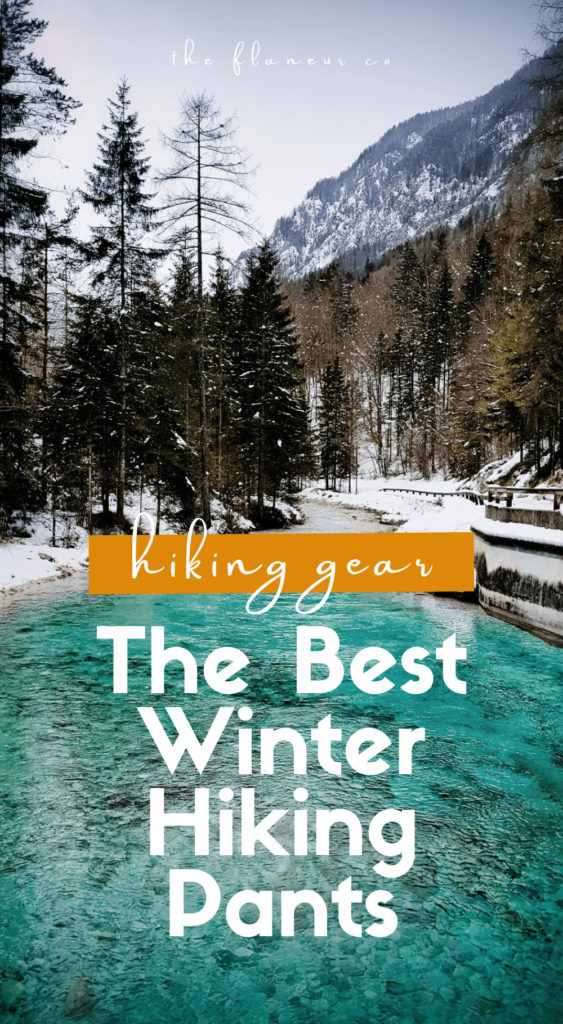
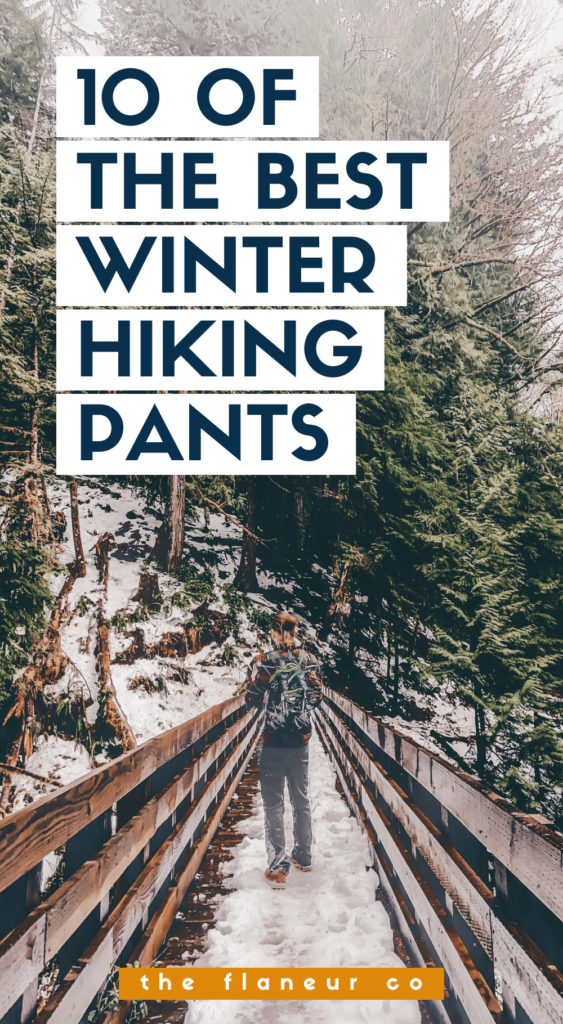
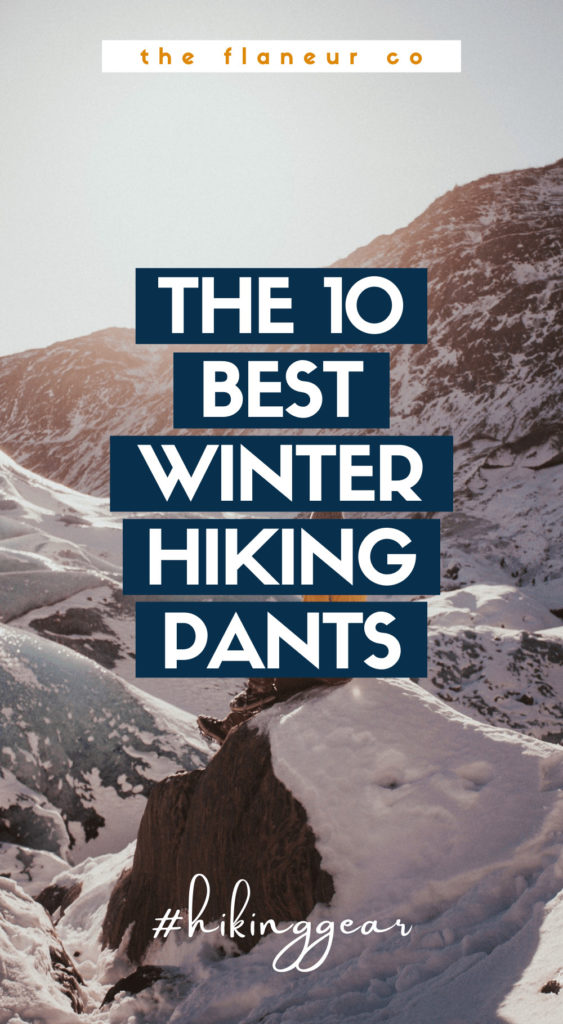
We’ll talk soon! Until then,
Cait









